Issues with Fuel Injection and How to Prevent It
Bad fuel is one of the main issues you’ll deal with when it comes to touring on EFI (electronic fuel-injected) motorcycles in less developed countries. After being on the road for 10 months, we’ve experienced various fueling issues and even ended up stranded in the middle of nowhere at one point. As a result, here are a few guidelines to help fellow travelers prevent similar mishaps.
Install a Pre-Fuel Filter
The sole purpose of a pre-filter is to prevent muck, water or gawd knows what from entering your fuel tank.
Looking into possible solutions, our options boiled down to Mr Funnel., a funnel-type filter, or Guglatech, a sock-type filter.
Those who are super-meticulous may want to use both.
The funnel-type is an external pre-filter whereas the sock is installed through the tank’s fueling port. Both types do the job of filtering out debris; however, the funnel must be carried separately and therefore takes up valuable packing space, whereas the sock remains in the tank and can be taken out, washed and reinserted.
We chose Guglatech. The only other precaution we take is to notify gas station attendants to be extra careful with the fueling nozzle to avoid ruining the pre-filter’s mesh. The Guglatech sock does not restrict the fuel flow.
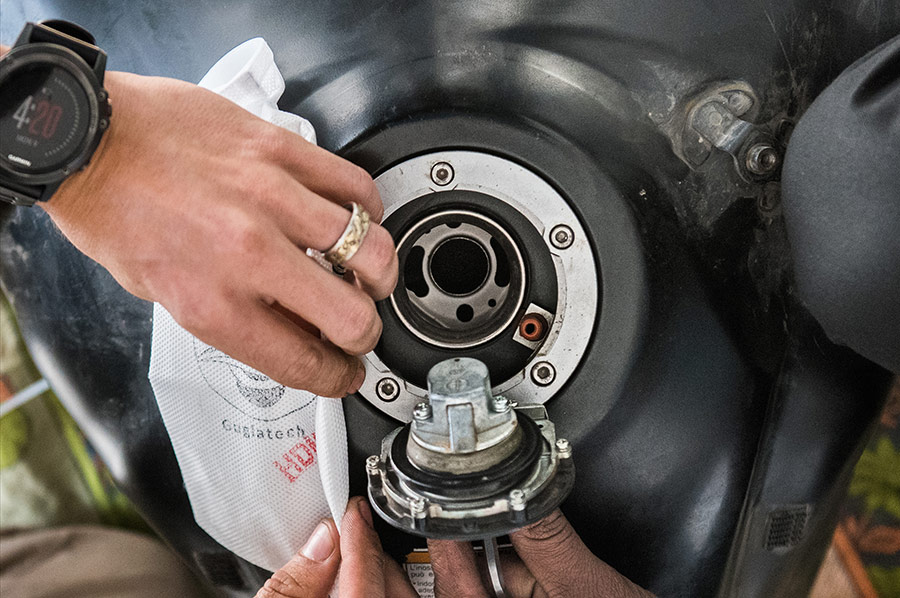
I’ve used this pre-filter for 2,500 kilometers around India and Nepal. Here’s a photo of what we discovered after taking it out for the first time:
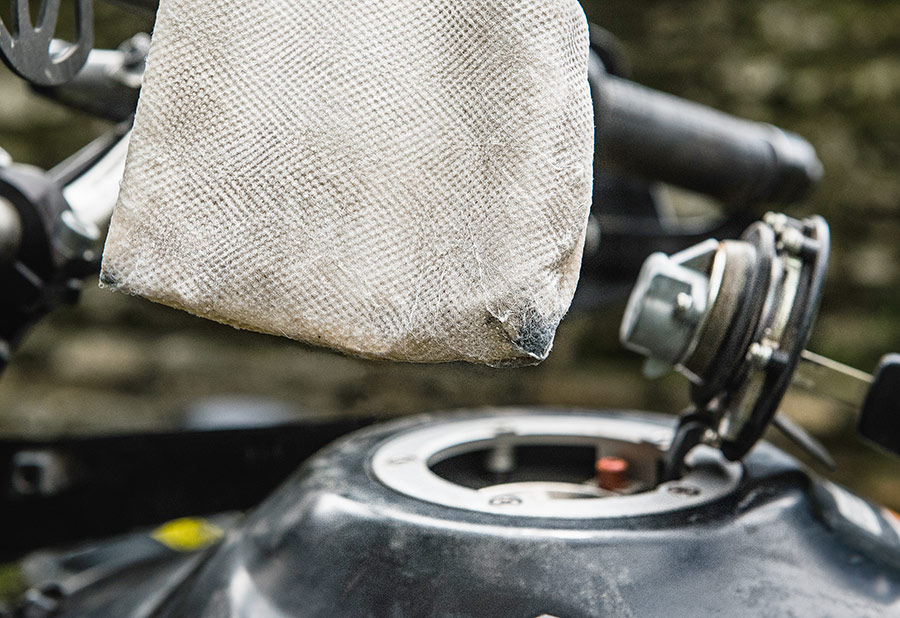
Add an Inline Fuel Filter
Having an inline filter creates added protection from unwanted substances that will clog fuel injectors. Some might not like the idea of using this type of filter due to a potential danger: If the fuel line breaks or somehow comes loose, fuel can drip over the hot engine and exhaust, and easily catch fire.
Despite the risk, if you take reasonable precautions, an inline filter is a good option. Keep in mind that finding someone to clean the injectors in certain countries is not an easy task.
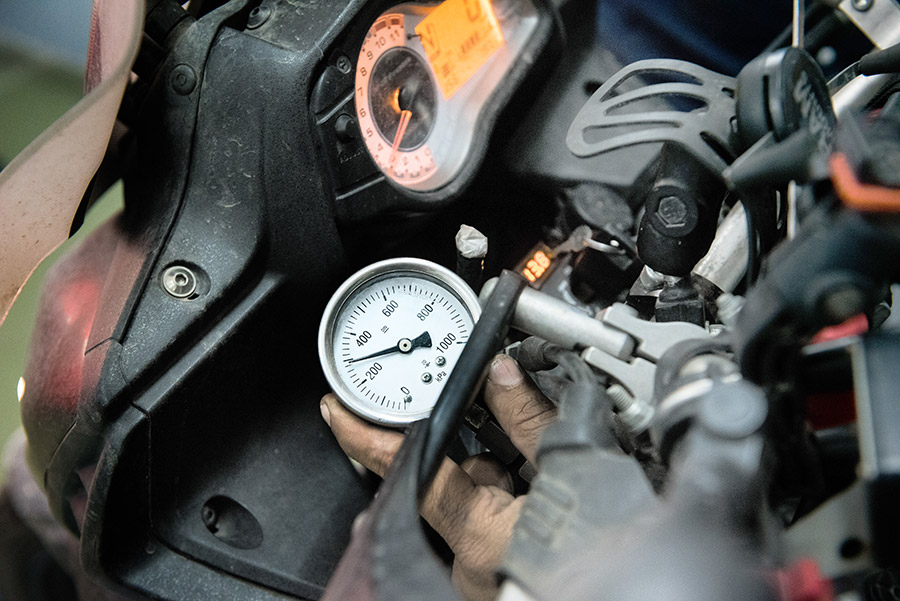
Another reason an inline filter is important is that the high-pressure fuel filter inside the fuel pump assembly can become clogged so badly that it can’t be cleaned. If that happens, other than replacing it with a new one, the most practical option is to puncture a hole in it. In that scenario the inline filter then makes up for what the high-pressure filter can no longer do.
Here’s How I Did It
Most of the guides you find online suggest cutting the original fuel line to add the inline filter, but I chose not to. The following method makes it easier to remove the tank without having to undo the added hose and clamps. I kept the original adapter that connects the fuel pump into the factory fuel line. This also facilitates the process in case I have to replace the inline filter or if I simply want to return the bike to its original state. Some argue that having a long fuel line will affect fuel pressure; however, I don’t find that to be the case.
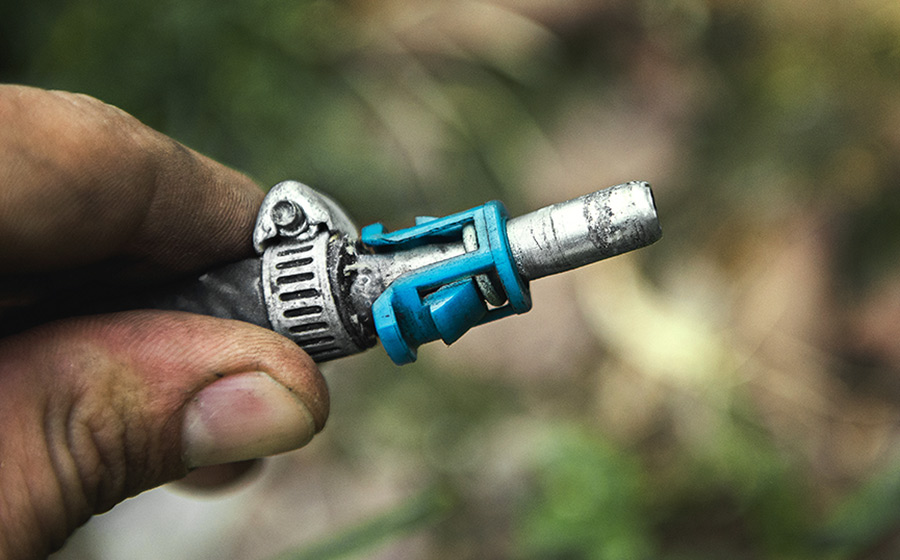
Here’s what you need to do:
- Use a fuel line quick-disconnect (similar to the one in the photo above), depending on your motorcycle and how the fuel pump attaches to the fuel line.
- Fuel line (around 30 cm should be more than enough).
- Good quality clamps (ideally stainless-steel—better than the ones shown in the photos which were all I could find in India).
- A good quality car inline fuel filter made of steel. It’s very important not to compromise on the material of this filter, and to make sure it’s durable enough to cope with high engine temperatures.
- Keeping the original fuel line (uncut) might make it tricky to find space for the filter. Because of this, I chose an angled fuel filter which better fit my V-Strom, otherwise there may be no other choice but to cut the original fuel line.
- A common mistake is installing the filter in the wrong flow direction. There’s usually an arrow indicating the fuel flow direction on these filters.
- I use double clamps almost everywhere, to prevent the hoses from coming loose.
In the end, it should look like this:
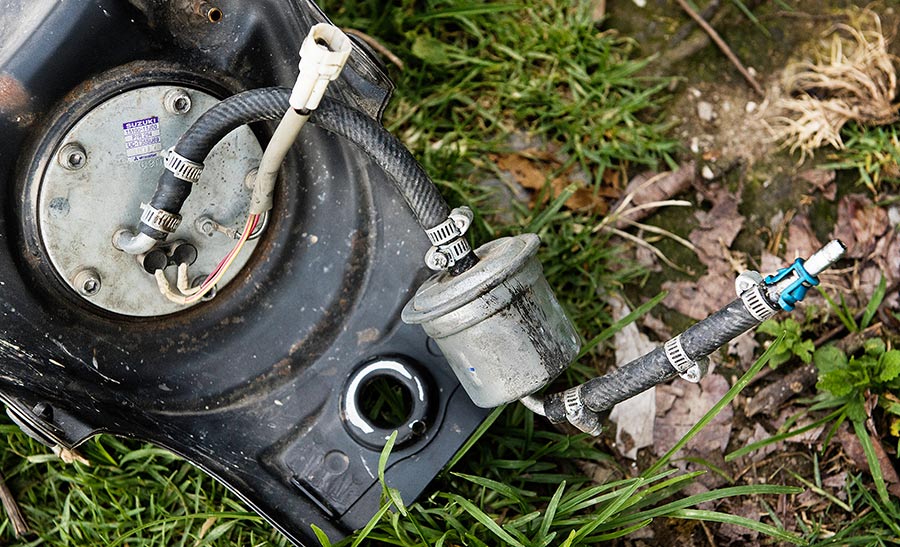
Carry an Extra Fuel Pump
Despite all the precautions mentioned above, you can never fully prevent unwanted substances from getting into the fuel and, unfortunately, this can cause the fuel pump to fail. Even though it might seem expensive, there are many aftermarket brands that offer fuel pumps at reasonable prices. We sourced an extra pump from FuelPumpFactory.com. They sent us a fuel pump, a strainer and a fuel regulator for just $50, which we have been using for the last 6,000 km without issues.
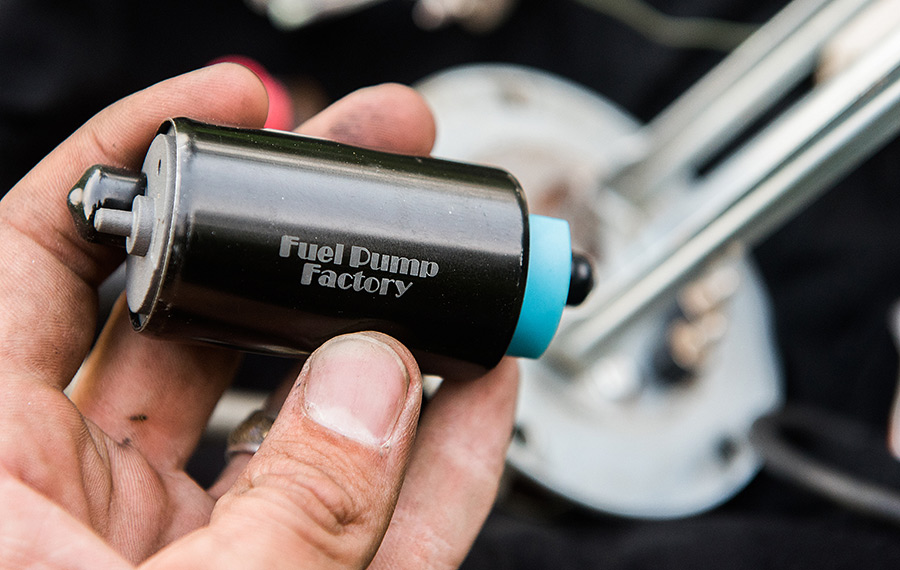
The photo below shows some of the issues we were dealing with before taking counter measures to filter the fuel.
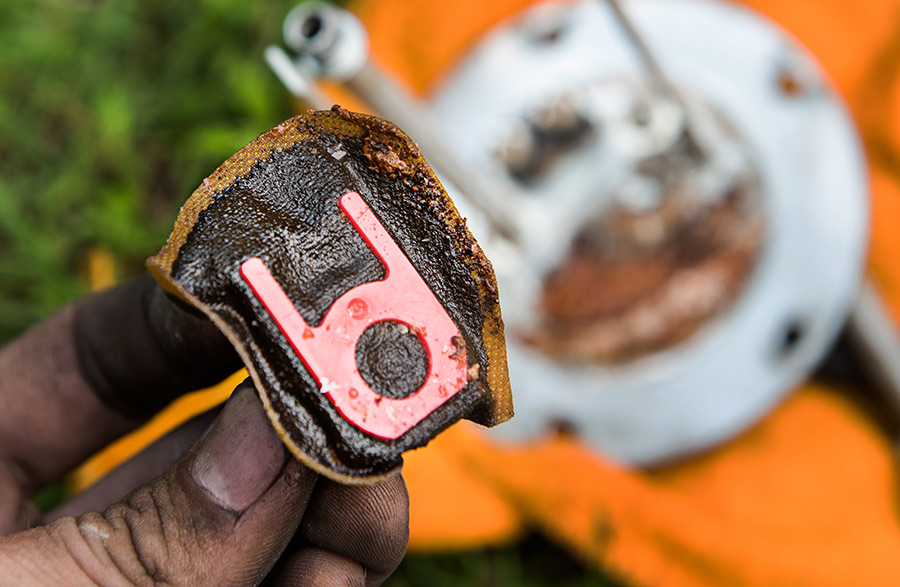
 Daryl & Deborah left home to tour the world in September of 2017. They are currently traveling Asia on a Suzuki V-Strom DL650. They call themselves Wild Feathers and share their adventure on their website, Facebook and Instagram. They love writing, photography, meeting locals wherever they ride and chasing sunsets off the beaten track. WildFeathersBlog.com
Daryl & Deborah left home to tour the world in September of 2017. They are currently traveling Asia on a Suzuki V-Strom DL650. They call themselves Wild Feathers and share their adventure on their website, Facebook and Instagram. They love writing, photography, meeting locals wherever they ride and chasing sunsets off the beaten track. WildFeathersBlog.com

